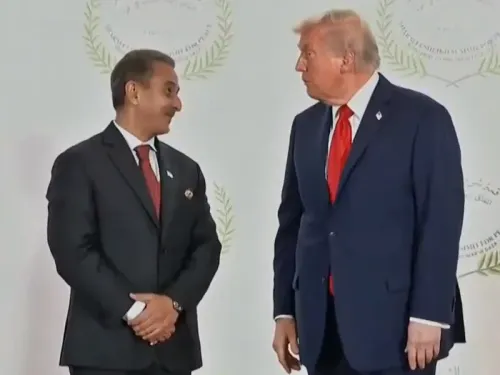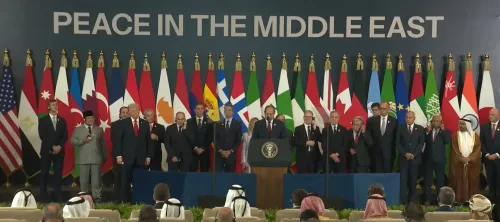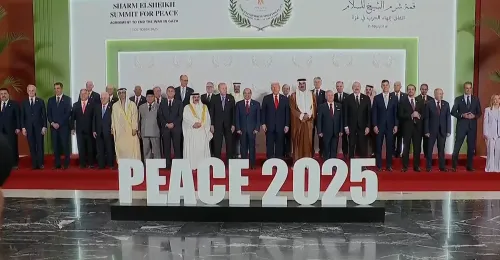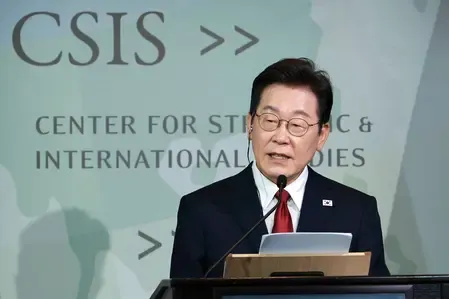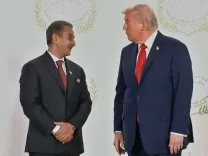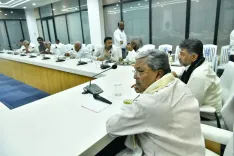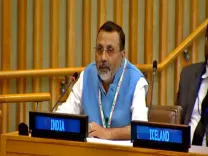Are PoK Residents Viewing the Deal with Pakistani Authorities as a 'Temporary Truce'?
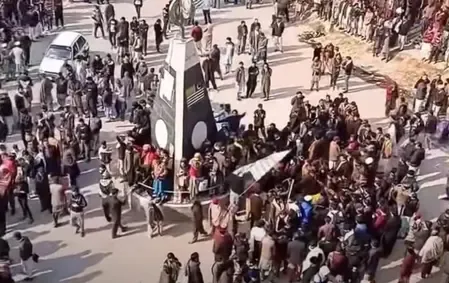
Synopsis
Key Takeaways
- Protests in PoJK stem from years of political neglect.
- Agreement with authorities viewed as a temporary truce.
- Many key demands remain unaddressed in the 25-point accord.
- Local frustration is rooted in systemic exploitation and inequality.
- Future unrest is likely without genuine political reforms.
London, Oct 13 (NationPress) Widespread protests that recently unfolded in Pakistan-occupied Jammu and Kashmir have been halted following violent confrontations and a settlement with local authorities. While the Pakistani government has characterized the agreement as a "restoration of peace", the residents of the region have referred to it as a temporary truce stemming from fatigue and oppression rather than a genuine resolution, according to a detailed report.
The demonstrations, spearheaded by the Jammu Kashmir Joint Awami Action Committee (JKJAAC) and bolstered by various civic groups, originated as a mass movement against prolonged political neglect, economic exploitation, and social discrimination imposed by Pakistani authorities, as highlighted in a UK-based publication aimed at British Asians, Asian Lite. The unrest in PoJK unfolded over several weeks in September, leading to violent encounters between unarmed civilians and security forces.
Numerous protesters and several police officers sustained injuries as the Pakistani security personnel employed live ammunition and tear gas to quell protests in cities such as Muzaffarabad, Mirpur, Neelum, and Poonch. Protest leaders agreed to halt the demonstrations after securing a 25-point agreement with local authorities.
Sakariya Kareem, writing for Asian Lite, noted that the agreement promises lower wheat prices, reduced electricity tariffs, and enhancements in health, education, and public services. However, it neglects many crucial demands from the wider 38-point charter, including the elimination of the 12 reserved legislative seats and a curtailing of the privileges enjoyed by Pakistan’s ruling elite. While Islamabad has framed the agreement as a "restoration of peace", many residents perceive it as a temporary truce arising from exhaustion and oppression, rather than a true solution. Years of unaddressed grievances and repeated unfulfilled promises have left the populace deeply skeptical. The apparent tranquility in PoJK thus conceals ongoing frustration and mistrust, raising concerns that unrest may re-emerge unless Pakistan enacts sincere political and economic reforms.
The protests in PoJK ignited after the JKAAAC and allied groups initiated a coordinated campaign, which featured strikes, rallies, and public demonstrations against the Pakistani authorities' failure to deliver on promised political, economic, and social rights.
The report further stated: "At the heart of the agitation is a comprehensive 38-point charter of demands that includes the abolition of the 12 legislative seats reserved for Kashmiri refugees settled in Pakistan, reductions in electricity tariffs, subsidization of essential goods like wheat flour, free and uniform education, free healthcare access, and the curtailment of privileges enjoyed by the ruling elite. These demands underscore deep-seated grievances stemming from systemic discrimination and socio-economic inequalities enforced by the Pakistani-administered regime in the territory. Regrettably, the Pakistani government has met peaceful protests with severe brutality. Security forces, including police and Rangers, have launched violent crackdowns using live ammunition and tear gas against unarmed demonstrators.
The crackdown has also involved arrests and allegations of extrajudicial actions against protest leaders and activists. Pakistani authorities imposed restrictions such as internet shutdowns and movement blockades. Despite this, protesters continued to defy curfews and blockades, demonstrating the residents' frustration and determination to secure justice and rights.
The Asian Lite report also highlighted: "Pakistan’s systemic exploitation of PoJK’s resources, particularly hydropower projects like the Mangla Dam, has fueled additional resentment. Locals assert that despite contributing to Pakistan’s energy production, they are burdened with exorbitant electricity tariffs, while government officials enjoy substantial privileges, including cars, fuel allowances, and personal security details. This economic imbalance emphasizes the unequal treatment that drives broader calls for justice and fair governance. The protests have emerged not only as a demand for immediate political reforms but also as a condemnation of Pakistan’s entrenched policies that continue to deprive the region of its resources and fundamental rights.

